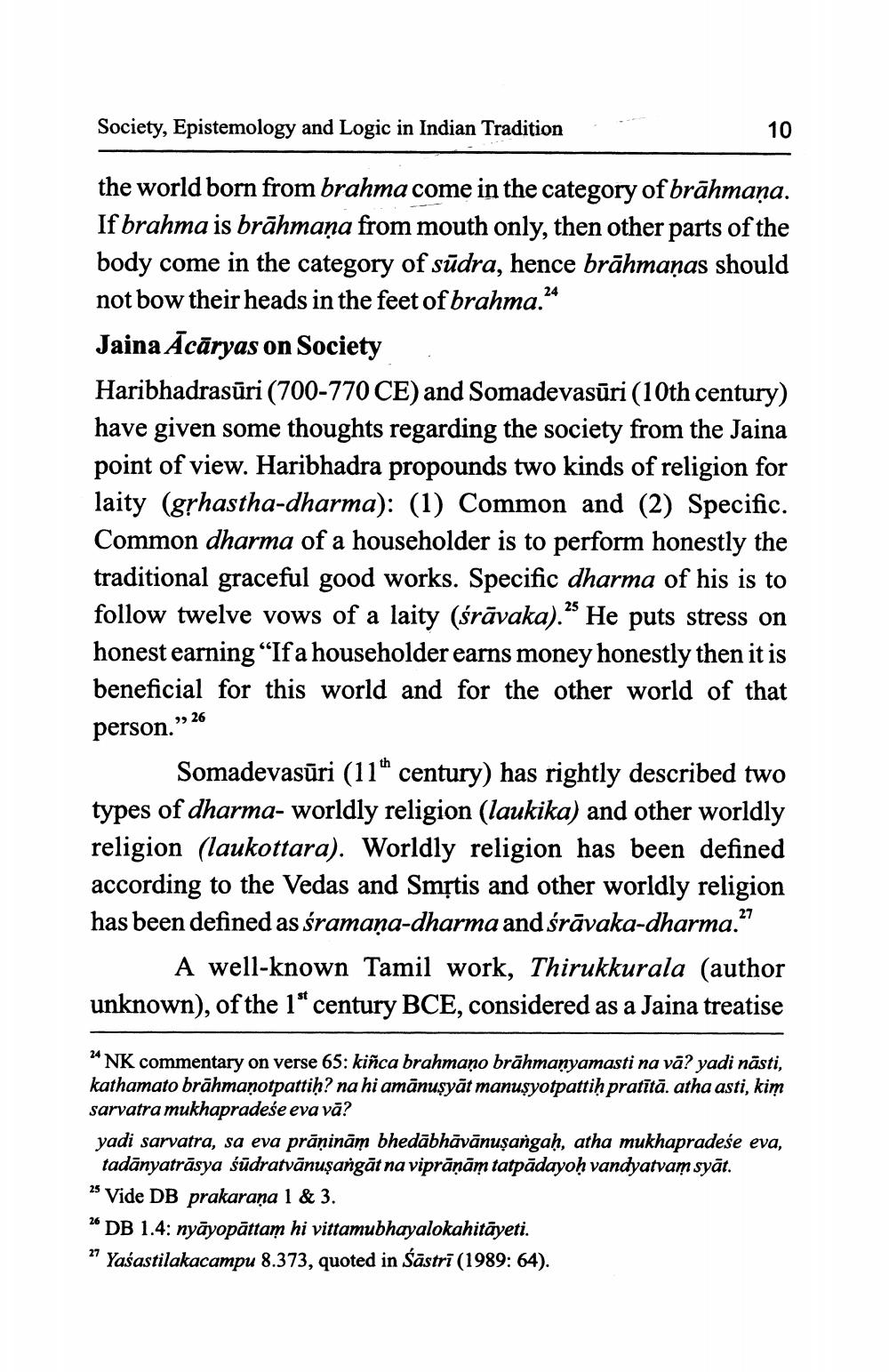________________
Society, Epistemology and Logic in Indian Tradition
:
10
the world born from brahma come in the category of brāhmaṇa. If brahma is brāhmaṇa from mouth only, then other parts of the body come in the category of sūdra, hence brāhmaṇas should not bow their heads in the feet of brahma.24 Jaina Ācāryas on Society Haribhadrasūri (700-770 CE) and Somadevasūri (10th century) have given some thoughts regarding the society from the Jaina point of view. Haribhadra propounds two kinds of religion for laity (grhastha-dharma): (1) Common and (2) Specific. Common dharma of a householder is to perform honestly the traditional graceful good works. Specific dharma of his is to follow twelve vows of a laity (śrāvaka). ” He puts stress on honest earning “If a householder earns money honestly then it is beneficial for this world and for the other world of that
person.” 26
Somadevasūri (11" century) has rightly described two types of dharma- worldly religion (laukika) and other worldly religion (laukottara). Worldly religion has been defined according to the Vedas and Smstis and other worldly religion has been defined as śramaņa-dharma and śrāvaka-dharma.”
A well-known Tamil work, Thirukkurala (author unknown), of the 1* century BCE, considered as a Jaina treatise
24 NK commentary on verse 65: kiñca brahmano brāhmanyamasti na vā? yadi năsti, kathamato brāhmanotpattih? na hi amănuşyāt manuşyotpattih pratītā. atha asti, sarvatra mukhapradeśe eva vā? yadi sarvatra, sa eva prāņinām bhedābhāvānuşangah, atha mukhapradeśe eva,
tadānyatrāsya śūdratvānuşańgāt na viprāņām tatpādayoḥ vandyatvam syāt. 29 Vide DB prakarana 1 & 3. ** DB 1.4: nyāyopāttam hi vittamubhayalokahitāyeti. 27 Yaśastilakacampu 8.373, quoted in Šāstrī (1989: 64).




